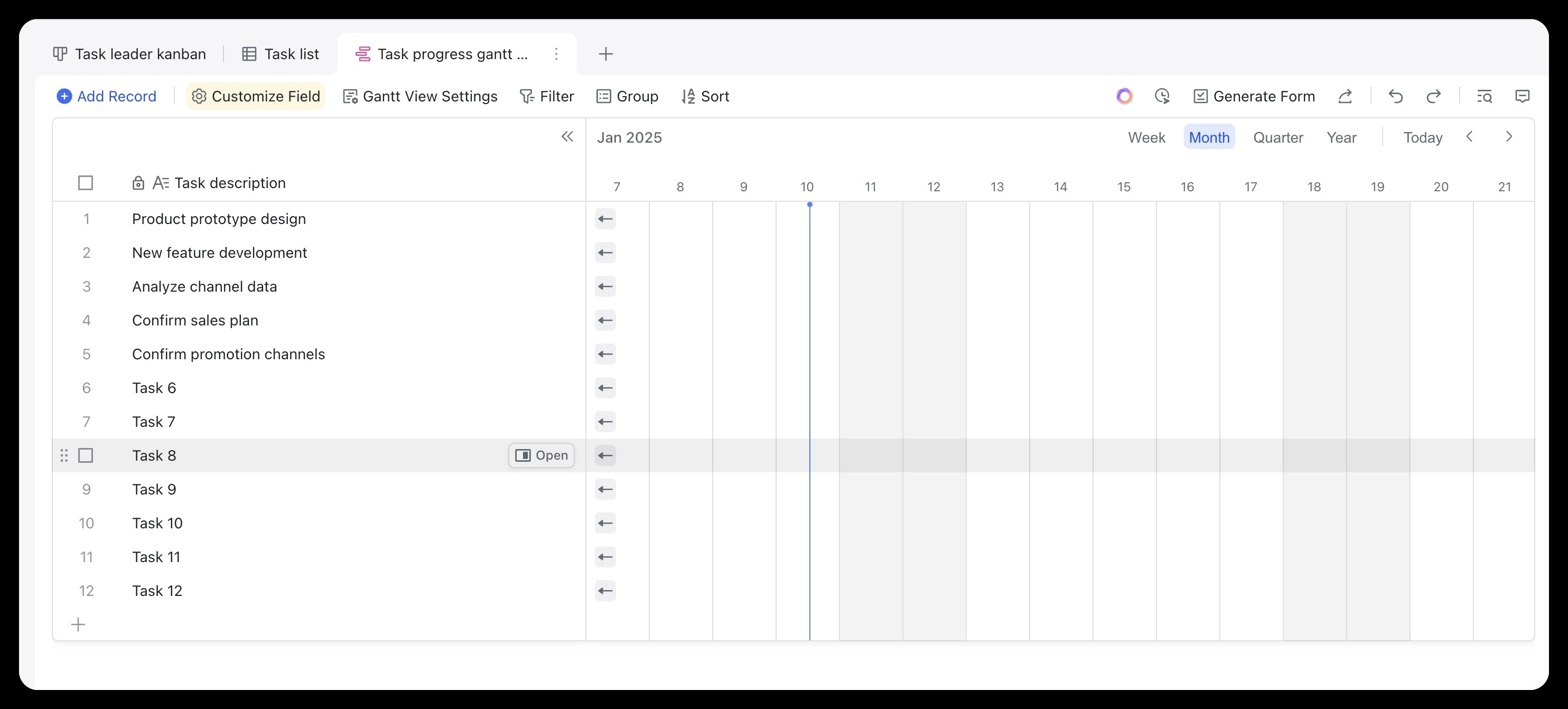Excellent operations management makes a difference you can both see and feel. It's the reason some businesses run like clockwork.
Sure, you may understand the basics of running a business, but how do you take your operations to the next level? In this article, we uncover the secrets to exceptional operations management and offer examples and tips to help you refine your approach.
What is operations management?
The definition of operations management (OM) varies depending on who you ask. In essence, it’s the process of planning, organizing, directing, and overseeing business activities to deliver the best possible products and services to customers.
Essentially, operations management is what gets a product from an idea to your customer’s doorstep.
What does operations management cover?
Think of everything it takes to get your product or service into a customer's hands. Without effective planning, you’re likely to waste time, effort, and money. That's where operations management comes in. With a strong operations foundation, operations management can provide the following benefits:
On-time deliveries: Supply chain and logistics are a big part of operations management, and together with production, ensure that customer deadlines are met.
Optimized resources: Efficient supply chain and inventory management means you always have what you need without unnecessary waste.
Consistent quality: Good and reliable quality control processes guarantee your products or services always meet customer expectations.
Seamless workflow: Operations management maximizes efficiency across departments.
Increased productivity: Get more done with the same resources through process improvements.
What doesn’t operations management cover?
While operations management takes on many important tasks, it doesn’t include responsibilities outside the production and delivery of goods or services, such as:
Strategic direction: Setting the company's big-picture goals isn't part of operations management.
External analysis: Operations management doesn't focus on external factors like market trends, the economy, or competitors.
Non-operational investments: Financial decisions unrelated to daily activities aren't handled by operations management.
Brand and marketing: Brand image and marketing fall outside the scope of operations management.
Compliance and governance: Operations management doesn’t involve setting company-wide rules or legal policies.
10 operations management examples
Operations management takes different forms across industries. Whether it's a healthcare or manufacturing organization or a local restaurant, successful businesses rely on well-designed operational processes.
Here’s what operations management means for 10 different business sectors:
1. Healthcare
In healthcare, miscommunication and delays can jeopardize patient care and drive up costs. Operations management ensures the right care is delivered at the right time, all while optimizing resources. This means coordinating patient care seamlessly, keeping wait times down, and managing costs effectively.
Doctors, nurses, and medical staff need to be able to share information quickly and accurately to provide the best possible patient care. Many hospitals have turned to technology to improve communication, reduce wait times, and keep costs down.
Take WhiteCoat, a leading telehealth provider. They used Lark's video conferencing platform, which offers AI translation, to help their Singapore and Vietnam divisions communicate more effectively. Lark Drive also became a central hub for their regional employees to collaborate and share important documents and knowledge, leading to more efficient and higher-quality care.
2. Manufacturing
Production delays, quality issues, and supply chain problems can lead to lost revenue and unfulfilled customers. Manufacturing operations management oversees and controls production to ensure everything runs smoothly and all products reach your customers perfectly.
It includes making sure assembly lines work, spotting and addressing production bottlenecks, and performing frequent quality checks. Another key job is managing supply chain logistics to keep production on track. The correct inventory level is critical. A delicate balance needs to be struck between having all the raw materials arrive at the factory at the right time and not having excessive unused inventory that costs money to store or leads to waste.
A successful manufacturing operation guarantees on-time deliveries, satisfied customers, and a more profitable bottom line.
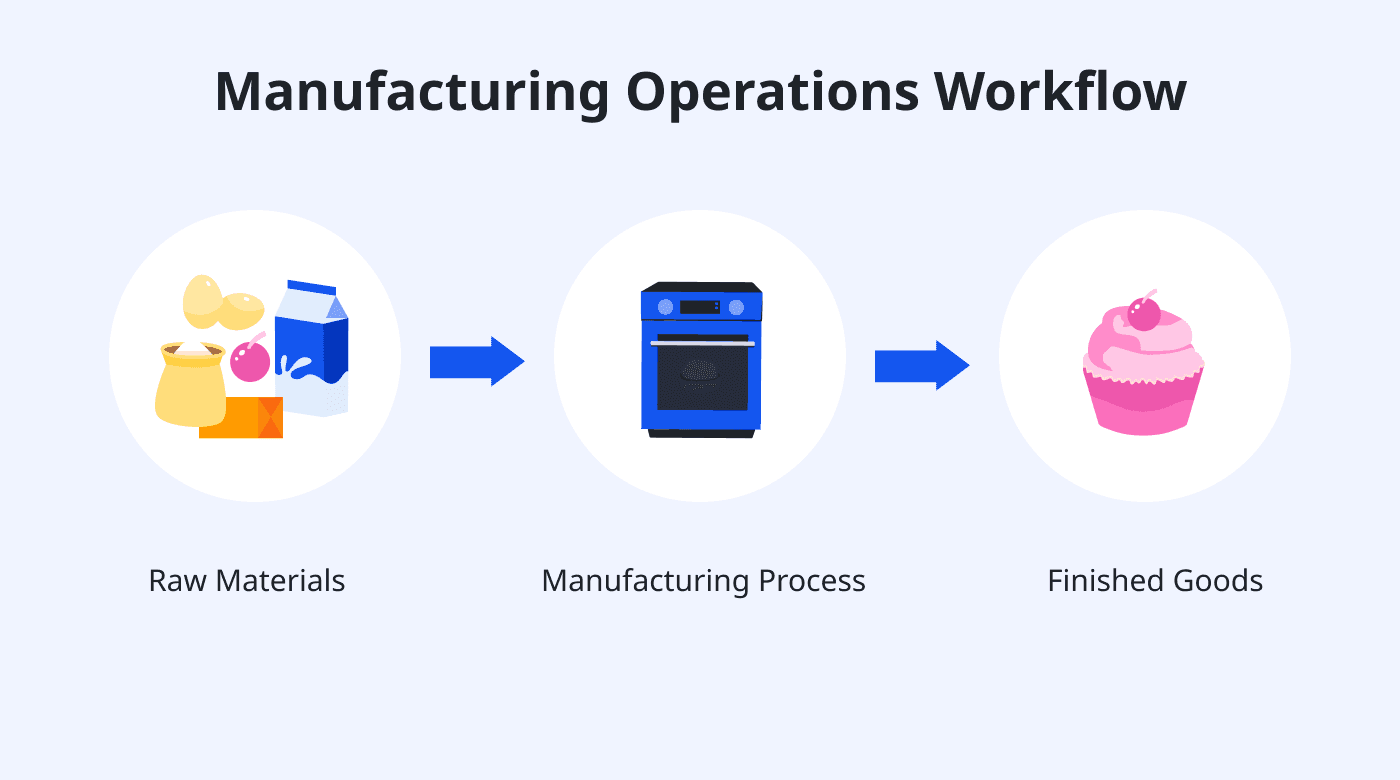
Image source: Lark
3. Restaurant
The chaotic yet captivating hit series “The Bear” is a great example of the contrast between the hectic behind-the-scenes world of restaurant operations and the polished dining experience those same restaurants give their customers.
There are so many aspects that go into restaurant management, including daily food preparation, managing food inventory, safety protocols, maintaining cleanliness, and optimizing kitchen workflow.
Operations management streamlines your kitchen workflow, ensures consistent food quality, and helps you optimize staffing for peak periods.
Mama Lou’s, a family-run Italian-Filipino restaurant, knows this well. By using Lark Base to centralize their daily sales reports and create a more organized workflow, they were able to not only improve customer satisfaction but also create a more positive work environment for their employees.
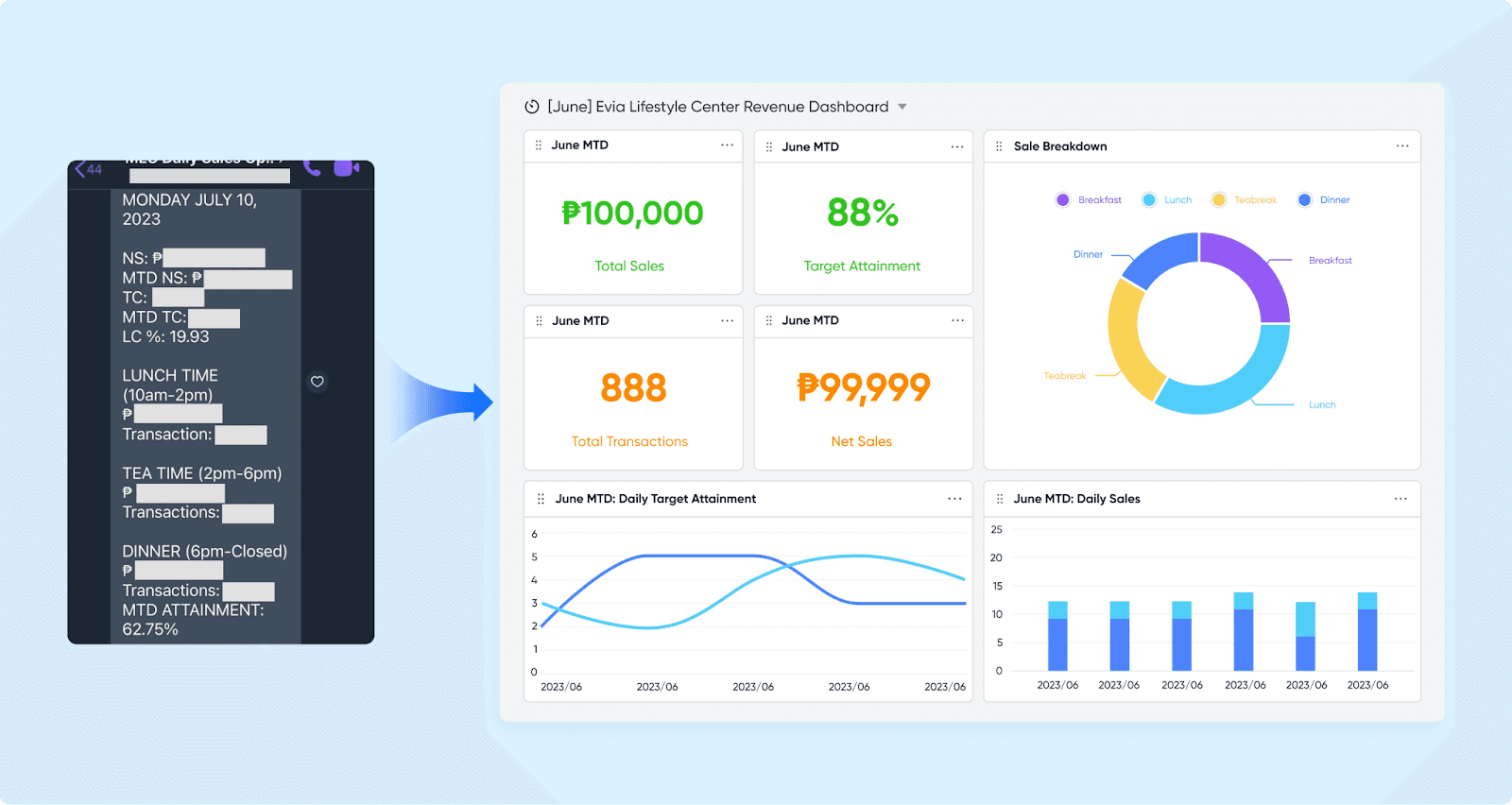
Image source: Lark
Learn how Lark can help your food and beverage businesses. Contact us now.
4. IT
In the fast-paced IT industry, downtime and slow response times lead to lost productivity and frustrated clients. Since customers rely on your IT services to keep everything from websites to customer databases up and running, operations management brings reliable support and proactive problem-solving.
This means having the right technicians available to troubleshoot, monitoring IT systems for potential problems, and gathering client feedback to improve your service.
When unplanned outages or issues occur, IT operations management has procedures in place to quickly restore service and minimize downtime. Here, Lark’s remote desktop control feature allows IT managers to troubleshoot issues from afar, saving time and money.

Image source: Lark
5. Retail
From global retail giants to local boutique shops, retail operations management keeps everything in check. But mismanaged inventory, inefficient staffing, and poor customer service can really hurt your business.
With effective operations management, you can better manage in-store operations, such as staffing, visual merchandising, and providing excellent customer service — all while driving sales.
Workforce scheduling is a major consideration in retail operations management. You need to make sure the right number of people are working to help customers during the busiest times and stay cost-effective when things are slower.
Additionally, analyzing sales data gives you a better idea of how to staff employees, what to stock, and where to concentrate your marketing efforts.
Try Lark’s employee task tracker template to keep your employees on top of their game—and their tasks.
Milan-based designer furniture brand REAL Home & Fashion used Lark to streamline their retail management and procurement processes. With Lark Anycross, they could see all past purchases in one place. As a result, their procurement team was able to better allocate resources and budgets to optimize their procurement process.
Explore Lark's retail solutions today.
6. Financial services
Banks, investment firms, and insurance providers are all institutions that we put our trust in. Even a small operational error or security breach can cause devastating damage to both your reputation and finances.
Think of the number of financial transactions that happen every second — there’s a lot that needs to be managed effectively and securely.
The three primary goals in the financial sector are to 1) protect customer information and funds, 2) optimize operations for efficiency, and 3) keep clients satisfied with quality service.
Operations management in the finance industry carries immense responsibility, as it involves creating secure processes and streamlining transactions. It also ensures your business is up-to-date on the latest regulatory compliance guidelines to protect both you and your customers.
7. E-commerce
E-commerce has made it easier than ever to find what we need to buy online. But, to run a successful e-commerce operation, you need to face the challenges of juggling orders, inventory, and deliveries across multiple online platforms.
Inefficient processes can cause delays in deliveries and unhappy consumer experiences. Operations management streamlines your e-commerce workflow, helping you process orders quickly, maintain accurate inventory, and ensure on-time deliveries.
Heptaco, a digital innovation company that builds e-commerce systems, understands the importance of efficient operations. By switching to Lark’s all-in-one platform, they were able to consolidate all key business communication and collaboration tools. This streamlined their operations, helping them to better collaborate with and support their customers and even save on costs.
8. Construction
Construction projects face tight deadlines, unexpected delays, and strict compliance regulations. Unforeseen costs and scheduling conflicts can seriously derail a project. Operations management keeps your construction projects on track with careful planning, efficient resource use, and regular quality checks.
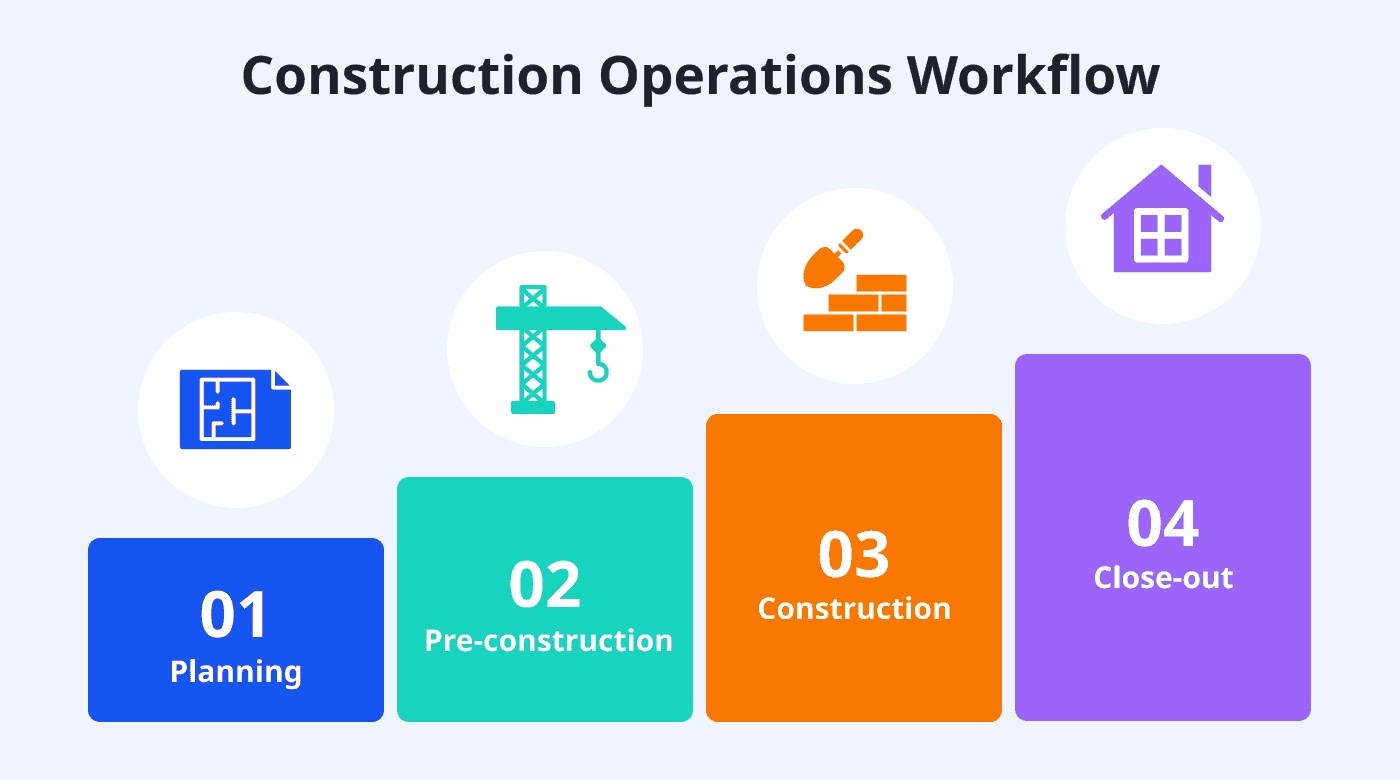
Image source: Lark
You’ll need to consider your budget, scheduling, and compliance with local building codes. This means creating a realistic timeline, outlining the necessary expenses, and staying updated on legal requirements.
Operations management makes sure these standards are upheld throughout the construction process, helping ensure that each project is completed on time and within budget.
9. Transportation
Rarely do we think about the operations that make our commute to work or deliveries possible. A successful transportation business needs a good operations strategy to deal with delays, routing inefficiencies, and vehicle breakdowns.
Operations management coordinates logistics for timely deliveries, plans vehicle routes, and sets up maintenance schedules to minimize delays, wasted fuel, and sudden breakdowns.
When Seryu Cargo, a logistics company specializing in e-commerce, needed a solution to improve efficiency and collaboration among their team, they turned to Lark. Lark's collaboration tools and mobile-friendly platform helped them automate routine administrative tasks and allowed drivers to update their main office on the go. This led to a more efficient deployment of resources and, as a result, improved operations as a whole.
10. Agriculture
The unpredictability of agricultural operations, like managing water, land, and livestock in variable weather conditions, is a unique challenge.
Effective operations management keeps your business running smoothly so that you can provide the food and resources customers need. It helps you optimize resources and make informed decisions. This leads to higher crop yields and a stronger business overall.
Many agriculture businesses are also focusing more on sustainability in farming. Agriculture operations management also helps reduce environmental impact.
What is the role of an operations manager?
Operations managers are the backbone of a business. They are in charge of the following:
Inventory management
An operations manager needs to manage stock so that the business can meet customer demands without overstocking or running out of inventory.
To do so, they usually use systems to track inventory levels, predict future needs, and organize restocking efforts.
Personnel management
Staffing and training are key parts of an operations manager's job. Hiring the right people and providing them with top-notch training helps you build a collaborative team that can do their jobs well and handle unexpected situations with ease.

Image source: Lark
Another aspect of the job is to help maintain a positive work environment. While operations managers aren't human resources professionals, they can do their part to address staff issues quickly and fairly.
Delivery planning
Operations managers carefully plan delivery routes and schedule timely deliveries to customers.
If sudden delivery issues arise, such as delays, wrong orders, or damaged goods, they need to jump in and address the problems to help prevent them from happening again. Their role here is to help ensure a smooth customer experience and build customer trust.
Process optimization
Think of operations managers as expert mechanics — constantly fine-tuning the engine of a business, even when it's already running well. They conduct regular reviews of current workflows to identify potential bottlenecks and optimize processes for more efficiency and cost savings.
Generally, this means testing and adopting new methods or technologies to enhance daily operations and performance. Adopting this approach keeps businesses competitive and agile.
Important skills for operations management
Since operations management is a multifaceted field, a diverse set of skills is needed to tackle the broad scope of responsibilities involved. This means that operations managers need to be well-versed in different areas, from inventory to human resources, making the following skills essential for success.
Communication Skills: Clear communication with team members and stakeholders ensures everyone is on the same page and fosters collaboration.
Analytical Skills: Operations managers must be able to analyze data to extract insights, such as trends, irregularities, and areas of improvement.
Problem-Solving Abilities: Issues will inevitably pop up in the process, no matter how streamlined it is. The ability to quickly address and resolve these issues is crucial to keep things moving forward without (too much) of a hitch.
Leadership Qualities: Strong leadership is needed to not only keep teams together, but inspire each member to give it their best.
Project Management: Many aspects of operations management can be considered projects. Effective project management skills are needed for planning, executing, and closing projects efficiently, ensuring that objectives are met on time.
Adaptability: Operations are fast-moving in nature, so the ability to adapt to changes and implement new strategies is indispensable.
4 operations management best practices
Figuring out the nitty-gritty of operations and workflows can get tricky and even overwhelming. We've compiled four best practices to help make it easier:
1. Automate routine business processes
There are so many tasks and processes involved in running a business. But the good news is you don’t have to do everything yourself.
As many as 89% of business owners and managers report that their businesses have grown due to process automation, and 92% say that automation has freed up their employees to take on more strategy-focused jobs.
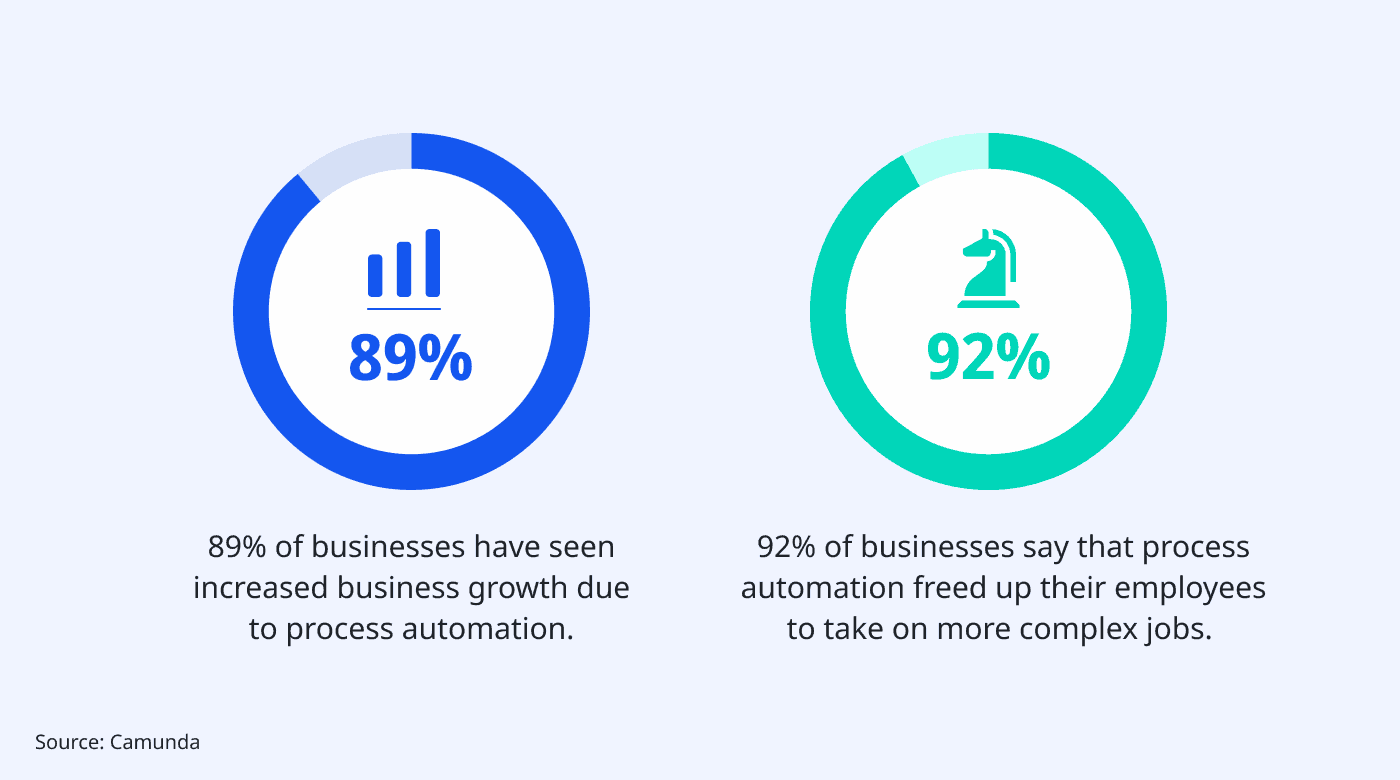
Image source: Lark
Automation technologies like robotic process automation, operations management software, and artificial intelligence (AI) can help make your operations more efficient. They can also reduce the number of mistakes made and make sure tasks are done in the most optimal way possible.
It’s estimated that AI will boost employee productivity by approximately 40% by 2035. But with so many tools, choosing the right ones is essential. Analyze your current processes and identify which are best suited for automation. AI can significantly improve efficiency and accuracy for repetitive, rules-based tasks, such as data entry and invoice processing.
Use Lark’s cost-savings calculator to find out how much you can save by automating your processes.
2. Adopt a consumer-centric approach
Your connection with a customer shouldn't end after you deliver a product or service. Gather and review customer feedback to find areas for improvement and new ways to customize products based on customer preferences.
For example, if a customer has a negative experience due to a delayed shipment, look at your delivery processes to see where you can strengthen them.
Take a page out of Amazon's playbook by making your operations consumer-centric. Align your operations strategy with customer needs to ensure they get the experience and value they expect from your products or services.
3. Prioritize continuous improvement
How do you know how well your business is performing? Start by setting key performance indicators (KPIs) to track operational performance and identify areas for improvement. A good tip is to set specific, measurable, achievable, relevant, and time-bound (SMART) KPIs.
Additionally, motivate employees to suggest improvements based on their experience. Since employees are typically the ones in the field, their insights can be valuable.
You can use Lark’s Survey Template to customize a feedback mechanism for employees and let them easily share their ideas.
4. Build a strong line of communication across departments
We all know how important communication is in the workplace. In fact, 26% of leaders believe that poor cross-team collaboration is the biggest challenge in business management.
To build a smooth-running operation, you need high-functioning and collaborative teams. But how do you do that across departments? By prioritizing clear and consistent team communication.
Hosting regular inter-departmental meetings and using collaborative platforms can help your different teams share information, problem-solve, and align their objectives. It’s equally important to encourage a culture of transparency and teamwork to bridge operational silos.
The challenges of collaboration multiply with teams spread across different time zones. Tools designed for global teams make all the difference. Choose platforms with features like video chatting, real-time translation, and clear task management to ensure seamless collaboration no matter where you are.
Lark suite improves operations management for all businesses
Operations management can be complicated, time-consuming, and expensive. Lark has you covered with helpful tools to automate your processes, boost efficiency, and reduce operational costs.
Lark Base
Looking for a quick approval process or a streamlined task tracker? Done. Lark's no-code automation means you can create custom workflows and SOPs within minutes. With Lark Automations, tasks move forward automatically, saving you time and effort.
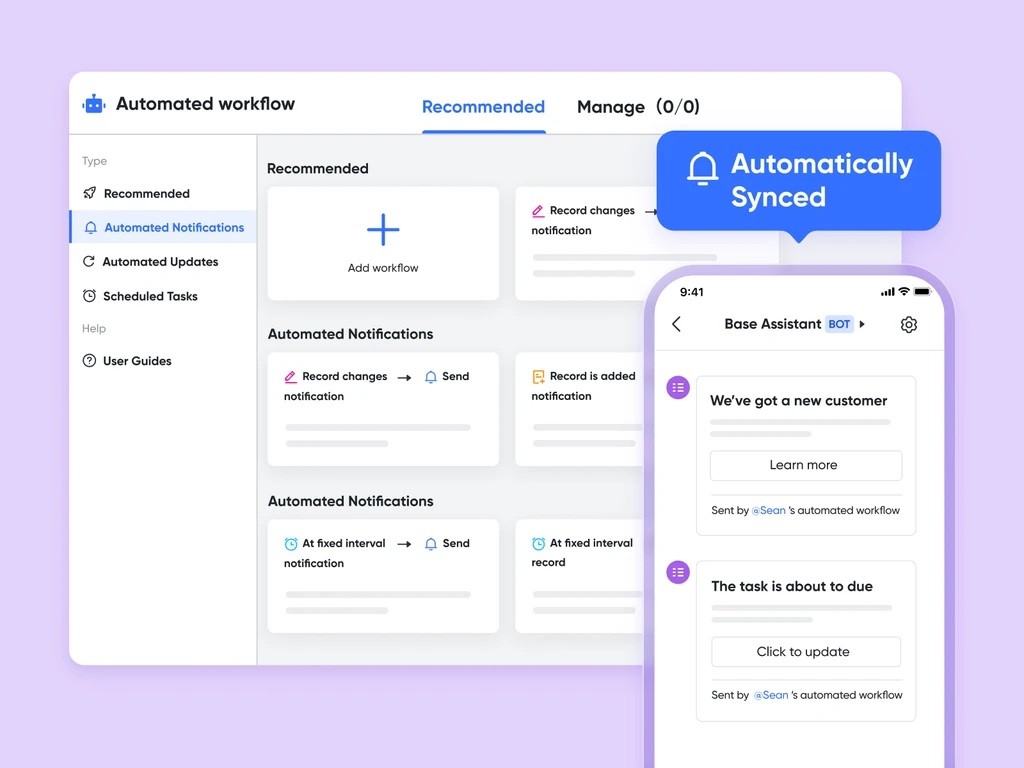
Image source: Lark
You can also customize permissions for cross-departmental teams so that everyone can access the relevant information they need while also protecting sensitive data.
Additionally, take advantage of Lark’s template library, which includes a customer service management & tracking base template and an order and inventory management template, among many others.
Lark Meetings
Powered by AI tech, Lark Meetings allows you to connect from anywhere and collaborate on documents in-call. You can share feedback and make edits instantly, keeping your team up to date.

Image source: Lark
Plus, Lark Minutes automatically transcribes video meetings into transcripts that you can view, search, and collaborate on. No more taking notes — now, you can fully focus on your discussions.
The best part? Lark’s video chat supports subtitles that can be translated in real time. This is especially helpful for global teams since everyone can express themselves in their native language.
If you're curious about just how powerful Lark’s video translator is, give it a try here.
Lark Approval
Do you wish you had an easier way to approve processes? Well, Lark Approval acts as a central approvals hub. You can submit and process all types of approvals with one click. Plus, you can customize your approval processes to perfectly suit your business needs.
Try out our reimbursement approval template to streamline your reimbursement process.
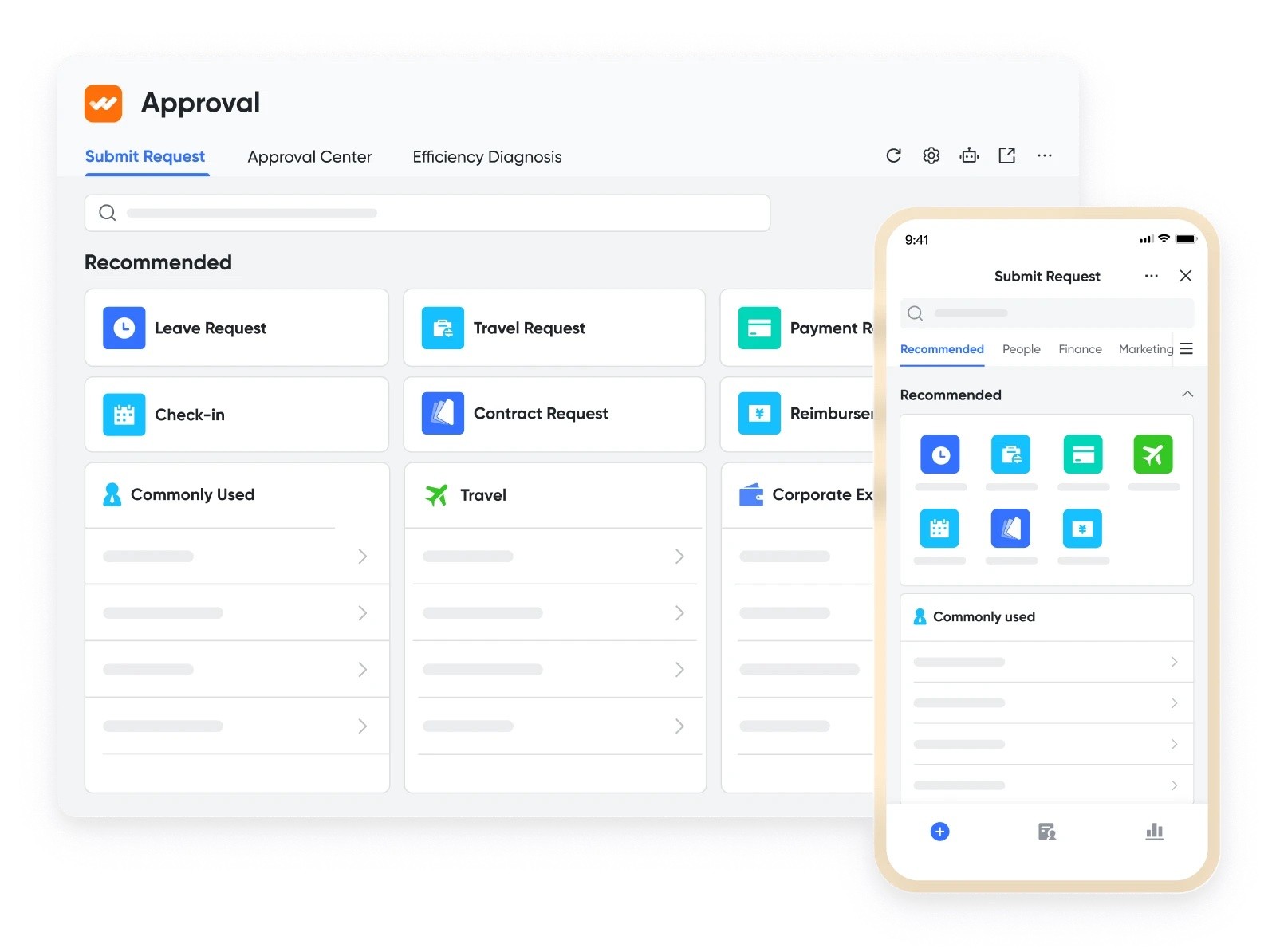
Image source: Lark
Lark OKR
Lark OKR helps you go beyond simply setting goals by giving you the tools you need to achieve them. You can easily organize your teams around strategic objectives to stay aligned.
On each team member’s Lark profile, you’ll find OKRs to help with cross-departmental alignment and personal accountability.
And when it’s time to update your OKRs, you can simply insert them into Lark Docs so your team can update them collectively and then sync them back to the OKR system.
Moreover, determine your team’s “state of health.” Through data analysis, you can monitor team progress in real time, identify potential problems early on, and make data-driven decisions to optimize your strategy.
Lark’s Team Weekly Report (OKR) template can help you track your team's weekly progress and align with organizational objectives.
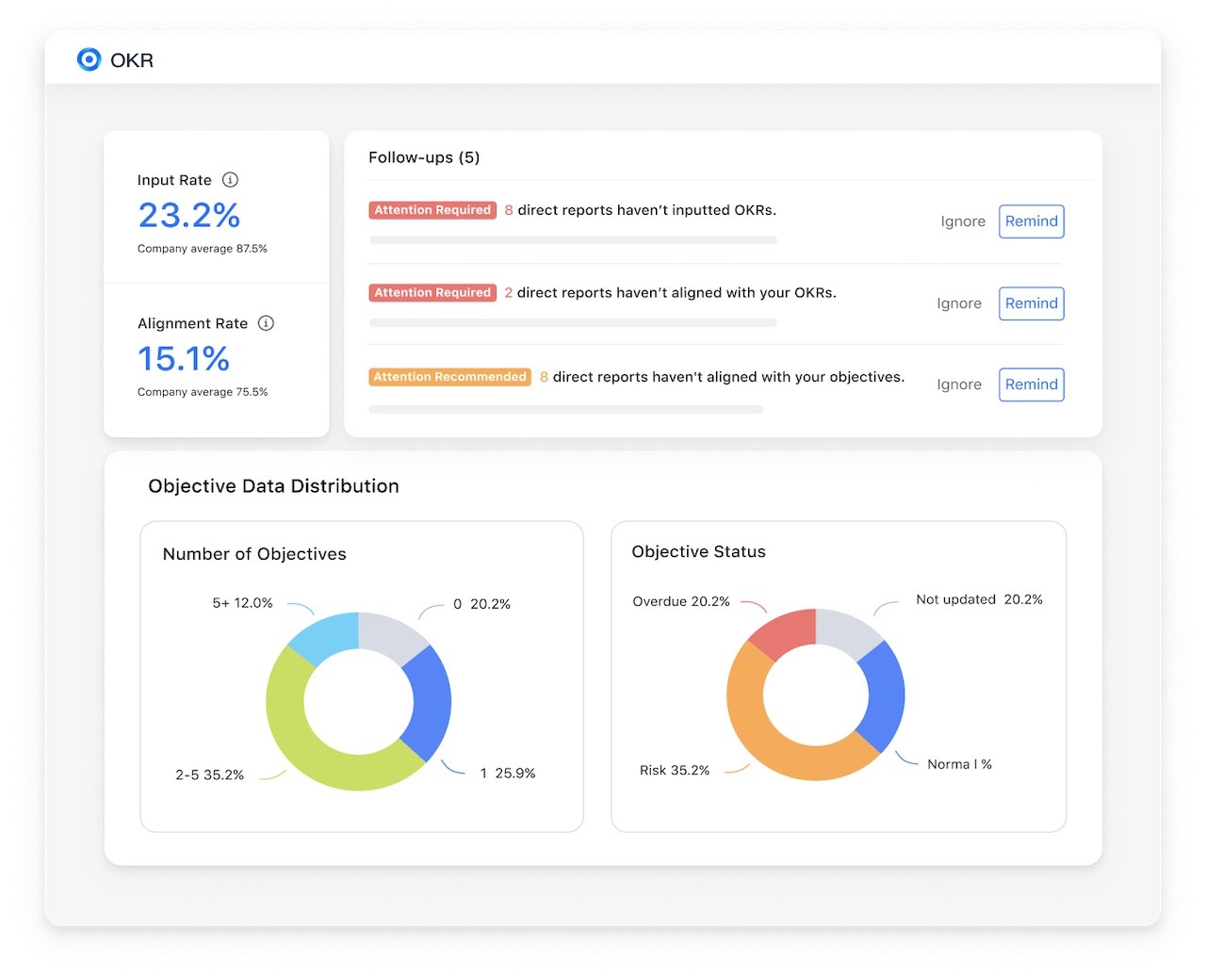
Image source: Lark
Manage your business operations with Lark’s all-in-one platform
Give your operations a productivity and efficiency boost. Try Lark for free today!
Table of Contents



